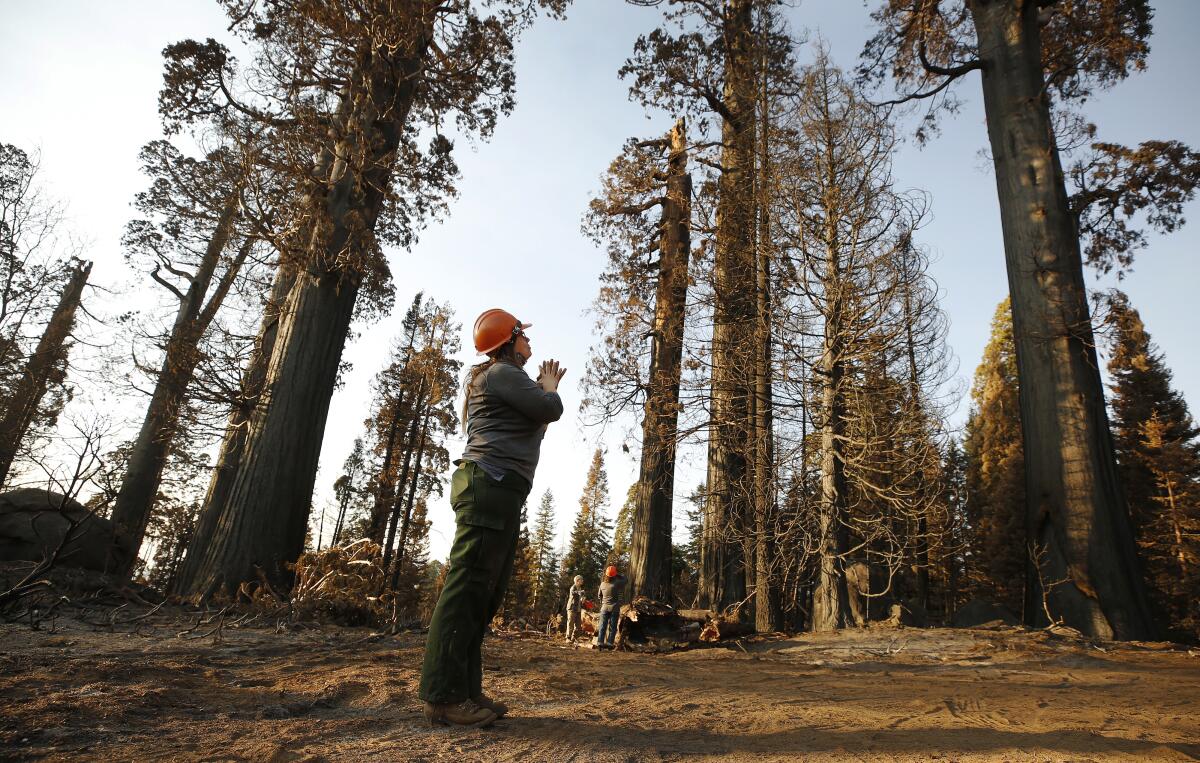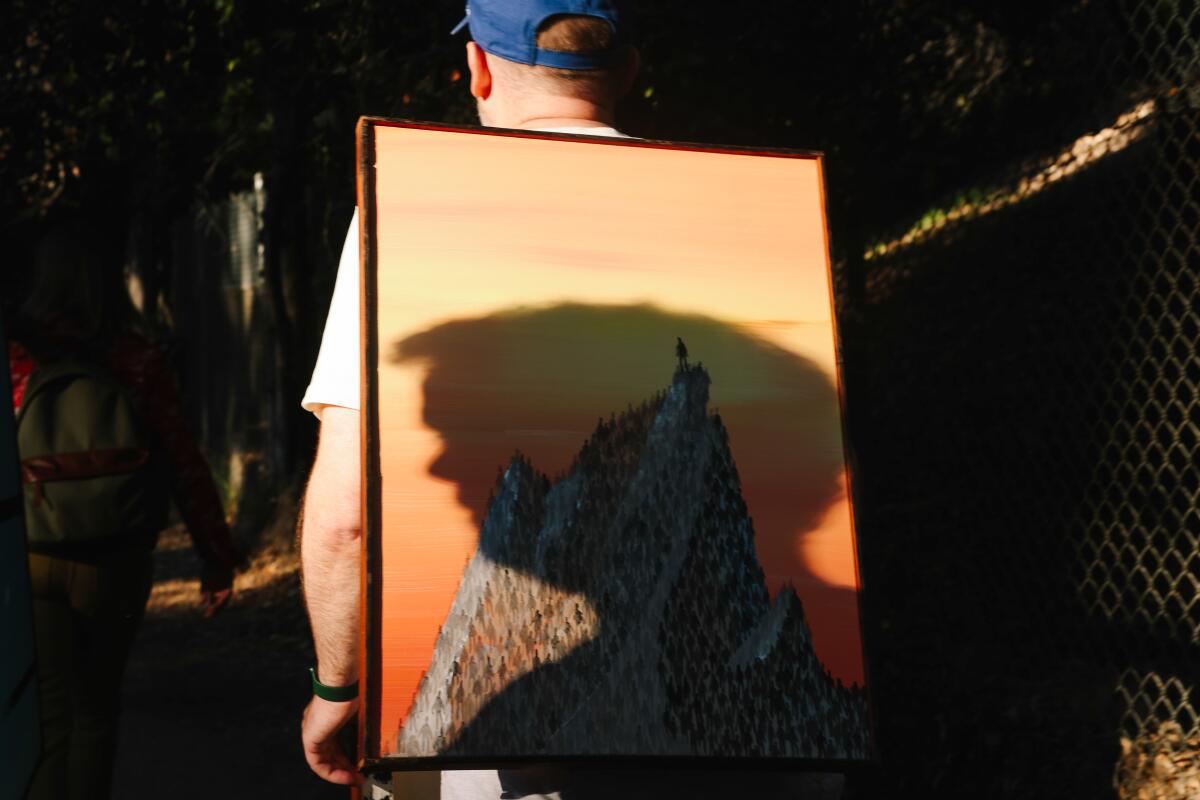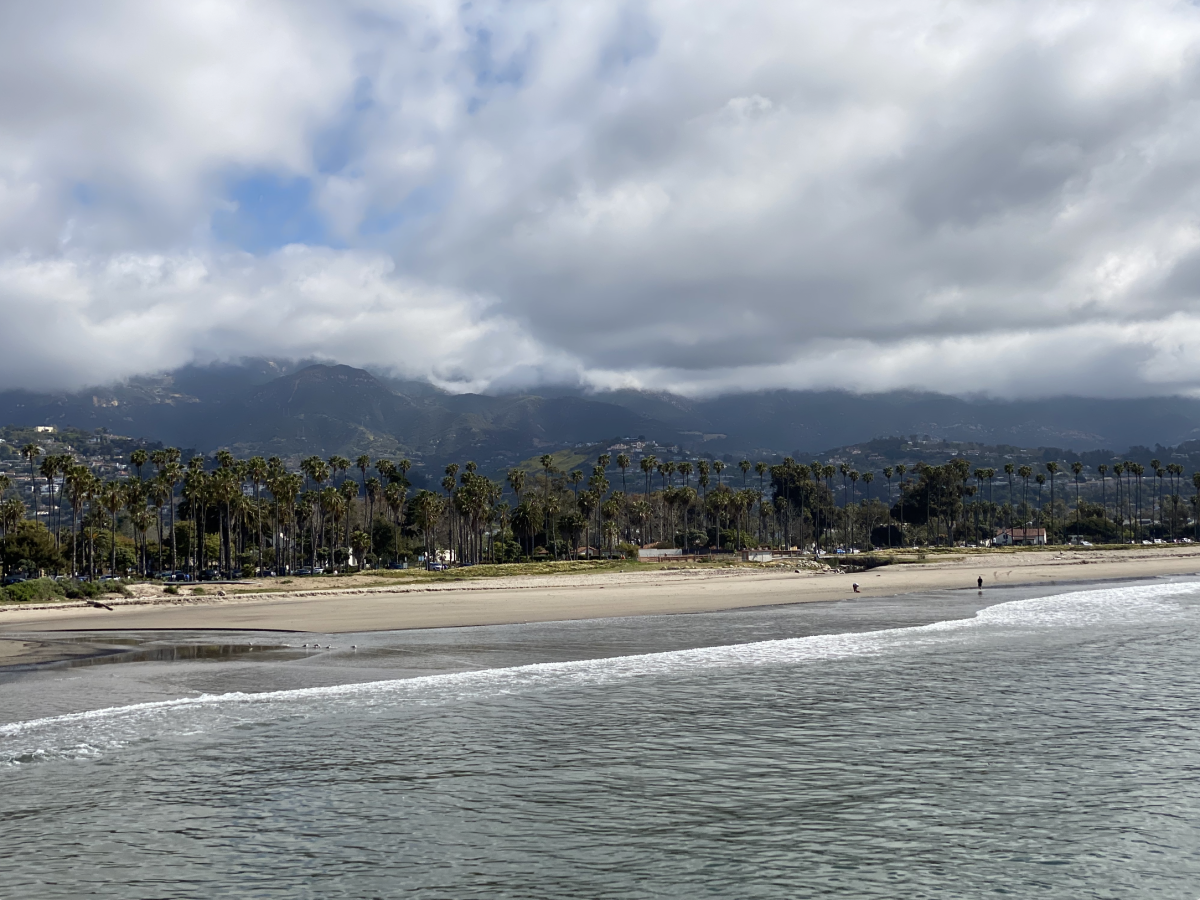What a lawsuit over planting sequoias tells us about mega fires

- Share via
Good morning. It’s Monday, Dec. 4. Here’s what you need to know to start your day.
- Sequoias are in an unprecedented retreat. Now there’s a lawsuit over how best to help them.
- These shelters are euthanizing more dogs despite promises to save them.
- The perfect L.A. restaurant for out-of-town guests.
- And here’s today’s e-newspaper
Sign up for Essential California
The most important California stories and recommendations in your inbox every morning.
You may occasionally receive promotional content from the Los Angeles Times.
Planting sequoias to help the population bounce back? A lawsuit says don’t even think about it.
Intense wildfires ripping through the Sierra Nevada have destroyed thousands of giant sequoias in recent years. The trees, which grow only in California, are a towering symbol of the majestic Golden State and its many natural wonders.
National Park Service officials want to help the forests recover and regrow by planting seedlings. ”Natural regeneration may not be sufficient to support self-sustaining groves into the future, particularly as the fires killed an unprecedented number of reproductive sequoia trees in the groves themselves,” the agency said in a news release.
But a contingent of environmental groups is suing NPS over its plan. The John Muir Project, Wilderness Watch, Sequoia ForestKeeper and the Tule River Conservancy argue it’s unnecessary, likely to do more harm than good and borne out of a misunderstanding of the forest’s natural ability to regenerate after fire.
The NPS estimates the sequoia population has shrunk by 13% to 19%. Its legal opponents put the number at 8%.
2020’s Castle fire alone destroyed an estimated 10% of mature sequoias in the Sierra Nevada — the only place in the world the species grows — according to a National Park Service report.
But there’s disagreement over who has the better data on sequoias. Research from the U.S. Geological Survey, the U.S. Forest Service and other agencies put their estimated population loss at 13% to 19%, based on two major fires in 2020 and 2021.
Ecologist Chad Hanson, director of the John Muir Project, cited his own research that put the figure at 8%. He argued that other estimates miscounted trees that had already died due to drought or age and even deemed some sequoias dead that were actually alive.
An NPS spokesperson pushed back, saying the estimates were well-researched by established agencies and institutions.
The NPS worries that without human intervention, the sequoia population won’t fully recover.
Officials said the reseeding effort is needed because of the low average of seedlings per acre found in the second year after a major fire — roughly 14,100, based on their estimates.
But the suing environmentalists also dispute that number, saying their own counts showed seedlings were abundant in many fire-scarred areas.
“I’m not exactly sure what’s going on with the National Park Service, but the news coming after the fires is very good,” Hanson told Times reporter Andrew J. Campa. “The regeneration of the forest is on pace to be the best in decades, but it seems like we’re allergic to good news.”
The core of the lawsuit comes down to “a fundamental disagreement over the role of high-intensity fires,” Campa explained.
“If the lawsuit is successful, it would stop the National Park Service from authorizing the use of dynamite, chain saws and mule trains to reach remote areas for reseeding,” he wrote.
Sequoias are built to withstand fires. But not the huge fires climate change has wrought.
UCLA geology professor Glen MacDonald studies fire from a historical perspective. He told me in August that we have to stop viewing wildfires — “a natural part of our ecosystems” — as an enemy to wage war against.
He and others have argued that by suppressing any and all fires, officials have prevented small and moderate blazes that naturally thin the forest. That means that when fires do strike, they’re much more intense.
“We have to leave behind the idea that we can suppress the fires and [if] we can throw enough money and resources at this, we’ll get past it,” MacDonald told me. “We can’t, so we have to plan for it.”
Sequoias are incredibly well-adapted to fire. In fact, they depend on it. Fire can burst their pine cones and help them reproduce, the AP reported. And their thick bark isolates them from small or moderate blazes.
But recent fires have pierced their defenses.
More on fires
- This year’s rains kept fire conditions to a minimum, but also spurred new vegetation that could burn in 2024.
- After a mild fire year, Southern California crews look ahead to 2024.
Today’s top stories
Animal shelters
- Despite promising to save dogs, two Los Angeles County shelters are euthanizing more of them — nearly doubling the number killed in recent years, a Times investigation has found.
- It’s not just L.A. County. Animal shelters across the U.S. are overflowing with cats and dogs in need of homes.
Politics
- The Newsom-DeSantis debate drew 4.75 million viewers on Fox News.
- After years of concern and criticism, Mayor Karen Bass has laid out new ethics rules for the nonprofit Mayor’s Fund.
- A Jewish USC professor who was barred from campus over Hamas comments has been allowed to return to the classroom.
- New York Rep. George Santos has been expelled from Congress, thanks in part to vote flips from vulnerable California Republicans.
Shohei Otani
- Shohei Ohtani’s free agency is playing out in secrecy. That’s not good for MLB.
- Waiting game: Why the Dodgers’ winter plans hinge on Ohtani.
- Ohtani’s status is also a major factor in Angels’ offseason plans.
Workers and unions
- Thousands of Cal State faculty are expected to walk out in rolling strike starting today, demanding higher pay.
- Organized labor has been having a moment in L.A. But in West Hollywood, which has the nation’s highest minimum wage, it’s the business owners who’ve been marching.
Early childhood education
- California law restricts preschools from expelling kids, but an increase in behavioral problems since the pandemic is proving a big challenge for teachers.
- Stanford study wades into reading wars with high marks for teaching that includes phonics.
More big stories
- With Israel ramping up its bombardment after the collapse of a temporary truce with Hamas, Palestinians wonder where they will go next.
- Average Texans and Californians agree a lot more than their states’ policies would suggest, even on issues such as abortion and guns, a new poll shows.
- Café Tropical was a beacon for people seeking sobriety. Then it closed.
- After the Skid Row Housing Trust financially imploded earlier this year, the L.A. City Council is close to approving $40 million to stabilize 1,500 formerly homeless tenants.
Get unlimited access to the Los Angeles Times. Subscribe here.
Commentary and opinions
- Mary McNamara: The year women saved Hollywood.
- Mimi Zheng: How California could extend mental health care to millions of residents in need.
- Editorial board: CalPERS must ditch fossil fuel investments. Its new ‘sustainable’ plan doesn’t do that.
- Paul Thornton: I rode 23 miles to work on an e-bike and saw the transportation promised land.
- Rashid Khalidi: How the U.S. has fueled Israel’s decades-long war on Palestinians.
- Mark Hannah: Does Biden benefit if foreign policy dominates the 2024 campaign?
Today’s great reads
This SoCal suburb is hailed for its five keys to a long, healthy life. But what is fact and what is marketing? Steve Lopez went to Loma Linda for his latest “Golden State” column, highlighting the community and the skepticism about claims of longevity there and elsewhere.
Other great reads
- Tourists are flooding Mexico’s wine country. They’re also destroying it.
- For Los Angeles theater, 2023 was a year of exuberant celebration and deepening gloom.
How can we make this newsletter more useful? Send comments to [email protected].
For your downtime

Going out
- 🥾 Hollywood gallery Lauren Powell Projects leads visitors on sunset art hikes 2½ miles to the Griffith Park summit.
- 💁♂️ The perfect L.A. restaurant for out-of-town guests.
Staying in
- 📱 Why TikTok is dangerously good at making you spend money.
- 📖 Rising-star author Anthony Veasna So died at 28. Now you can read his unfinished novel.
- 🧑🍳 Here’s a recipe for Cold Chicken Slices With Sesame And Sichuan Pepper.
- ✏️ Get our free daily crossword puzzle, sudoku, word search and arcade games.
And finally ... a great photo
Show us your favorite place in California! Send us photos you have taken of spots in California that are special — natural or human-made — and tell us why they’re important to you.

Today’s great photo is from Karthik Prasad of Los Angeles: a view of Los Padres National Forest, as seen from the beach in Santa Barbara.
Have a great day, from the Essential California team
Ryan Fonseca, reporter
Karim Doumar, head of newsletters
Check our top stories, topics and the latest articles on latimes.com.
Sign up for Essential California
The most important California stories and recommendations in your inbox every morning.
You may occasionally receive promotional content from the Los Angeles Times.






